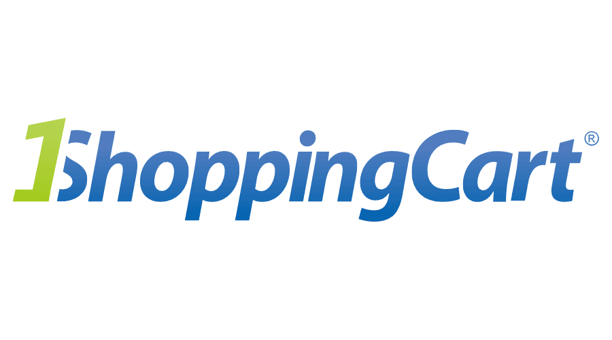
The eCommerce market is growing exponentially nowadays. There are a whopping 12-24 million eCommerce sites worldwide. And experts say that by 2040, 95% of all purchases will be facilitated by eCommerce. This presents a tremendous opportunity for growth, especially if you plan on entering the eCommerce industry and creating digital products to sell online.
But before you go ahead, probably, you wonder what makes eCommerce stores like Amazon, eBay, Flipkart, etc. different from other eCommerce stores in the world? How to make your eCommerce store successful in this competitive world?
While there are several factors that can impact the bottom line of an eCommerce store, paying attention to your shipping and order fulfillment process also plays an important role.
Did you know that:
53% of shoppers consider delivery speed as a critical factor when evaluating their online orders.
Nearly 38% of shoppers will avoid shopping with a retailer again after having a bad delivery experience.
Approx 61% of shoppers abandon their cart because of high delivery costs.
A quarter of shoppers cancel their orders due to slow delivery speed.
So, if you want your eCommerce store to stand out from the crowd, optimizing your shipping and order delivery process can help you reach your goals. But, where to start? In this guide, we will discuss everything you need to know about eCommerce shipping and the order fulfillment process.
What Is eCommerce Shipping And Fulfillment?
eCommerce shipping and fulfillment refers to the process of delivering ordered goods from an online store to the customer. It involves the packaging and dispatch of items from the seller's warehouse to the customer's shipping address, as well as providing tracking information, customer service, and returns management. The goal of eCommerce shipping and fulfillment is to provide a seamless and efficient experience for customers and to ensure that products are delivered in a timely and satisfactory manner.
What Is The Process of eCommerce Shipping And Fulfillment?
Step 1: Order Processing
The first step in the eCommerce shipping and fulfillment process is the processing of an order. This involves the following steps:
Receiving The Order: The order is received by the eCommerce store through its website or mobile app.
Verifying The Order: The order is verified to ensure that all details are correct, including the shipping address, payment method, and items ordered.
Picking And Packing: The ordered items are picked from the warehouse and packaged for shipping.
Step 2: Shipping
The next step in the ecommerce shipping and fulfillment process is the actual shipping of the package. This involves the following steps:
Labeling And Addressing: The package is labeled with the correct shipping address and any relevant tracking information.
Shipping Carrier Selection: The ecommerce store selects a shipping carrier to deliver the package to the customer.
Dispatching The Package: The packaged items are dispatched to the shipping carrier for delivery.
Step 3: Tracking And Delivery
Once the package has been dispatched, the ecommerce store provides tracking information to the customer, allowing them to track the delivery of their order. The following steps occur during this stage:
Tracking The Package: The customer can track the delivery of their order using the tracking information provided by the ecommerce store.
Delivery: The package is delivered to the customer's shipping address.
Confirmation Of Delivery: The ecommerce store confirms the delivery of the package to the customer.
Step 4: Customer Service And Returns Management
The final step in the eCommerce shipping and fulfillment process is the management of customer service and returns. This involves the following steps:
Customer Service: The ecommerce store provides customer service to address any questions or concerns that the customer may have regarding their order.
Returns Management: The ecommerce store manages the process of returns, including the acceptance and processing of returns, as well as providing refunds or exchanges.
Why Is eCommerce Shipping And Fulfillment Process Important?
Shipping and order fulfillment is one of the critical touchpoints in the customer journey. It can either make or break the customer's experience with your brand. A seamless and efficient shipping process can lead to higher customer satisfaction and repeat purchases. On the other hand, a slow, unreliable, or poor delivery experience can result in negative reviews, decreased customer loyalty, and a decline in sales.
Here are a few reasons why ecommerce shipping and order fulfillment process is important:
Improves Brand Reputation
A successful shipping and fulfillment process can help build brand reputation and credibility. It can increase customer trust in your brand and make them more likely to recommend your products to others. A reliable and efficient shipping process shows that you are committed to providing a quality customer experience, which can lead to increased customer loyalty.
Increases Sales
A well-optimized shipping and fulfillment process can drive sales and increase customer loyalty. Customers are more likely to purchase from an online store that offers fast and affordable delivery options. Additionally, a reliable shipping process can lead to repeat purchases, which can contribute to the overall growth of your ecommerce business.
Reduces Costs
Incorporating a streamlined shipping and fulfillment process can help reduce costs associated with shipping, returns, and customer service. By automating processes and implementing efficient systems, you can minimize errors, reduce labor costs, and improve shipping speed.
Planning Your Order Fulfillment Strategy
E-commerce businesses have different order fulfillment needs, but all have one thing in common - a strategy is key to success. Your order fulfillment strategy is the roadmap that guides you from receiving an order to delivering it to the customer's doorstep. In this article, we will explore the key components of a successful order fulfillment strategy and how to implement them.
Location is everything
One of the first decisions you need to make when planning your order fulfillment strategy is where to store your products. The location of your fulfillment center will impact shipping times, cost, and overall customer satisfaction. Here are some factors to consider when choosing a fulfillment center location:
Proximity to customers: If you serve a broad customer base, it may be more cost-effective to have multiple fulfillment centers, each closer to your target demographic.
Cost of real estate: Renting or buying warehouse space can be expensive, especially in densely populated areas.
Shipping costs: Shipping from one location is typically less expensive than shipping from multiple locations.
Labor costs: Wages, taxes, and benefits for your employees vary depending on location.
Free 2-day shipping
Offering free shipping is a popular way to increase sales, but it can also be expensive. To keep costs low, many e-commerce businesses offer free shipping with a minimum purchase, or a limited time period. Another option is to offer free 2-day shipping, which can be more affordable than standard shipping and appeals to customers who want their products quickly.
To offer free 2-day shipping, consider the following:
Shipping costs: Make sure you understand the cost of shipping and how to keep it low.
Inventory management: Make sure you have the right inventory in the right place at the right time.
Carrier selection: Choose a carrier that offers affordable 2-day shipping rates and reliable delivery times.
Technology integrations
Technology plays a crucial role in streamlining your order fulfillment process. There are tools like Shoprocket to help you manage your inventory, shipping, and customer service. Some of the most important technology integrations to consider include:
Inventory management software: Keeps track of your stock levels, helps you avoid overstocking, and can alert you when you need to reorder. One such software is Shoprocket, which offers advanced inventory management features such as product categorization, stock tracking, and automatic reordering.
Shipping software: Automates the shipping process and integrates with carriers to give you real-time shipping rates and tracking information. Shoprocket integrates with popular shipping carriers such as DHL, UPS, and FedEx to offer fast and affordable shipping options.
Customer service software: Provides a centralized location to manage customer inquiries and complaints, helping you provide quick and efficient support. Shoprocket integrates with popular customer service tools such as Zendesk, allowing you to manage all your customer interactions in one place.
By integrating these tools and software, you can streamline your order fulfillment process, save time and reduce the risk of errors. With Shoprocket, you can manage all aspects of your ecommerce business from a single platform, making it easier than ever to grow your online store.
The Bottom Line
eCommerce shipping and fulfillment is the process of delivering ordered goods from an online store to the customer, which includes packaging, dispatch, tracking, customer service and returns management. It is a critical touchpoint in the customer journey that can impact customer satisfaction and repeat purchases. Optimizing your shipping and fulfillment strategy can improve your brand reputation, increase sales and reduce costs, and planning a successful order fulfillment strategy is key to the success of an eCommerce business.
If you are wondering how Shoprocket can help you in eCommerce shipping and fulfillment, get in touch with our team now!






